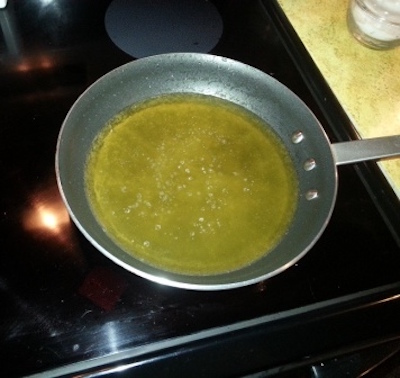
*Bacon Grease Soap*
I've never before made soap.
After seeing a video making soap from bacon grease, I wanted to try it. I saved breakfast bacon grease in a metal coffee can for months until I accumulated enough for a project. When the coffee can was about half full, I dumped it into a skillet, in small batches, and heated just until melted.

Then strained it into a measuring cup, removing meaty products that would make my soap go rancid.
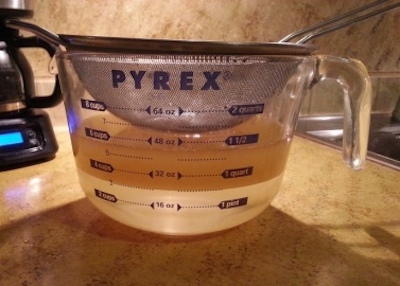
I added water and refrigerated it. Water is heavier than oil. As it chilled, impurities from the grease fell to into the water, separating them from the congealing fat on top. I had to repeat two additional times - heating, straining and cooling - until the water was clear, and the fat cooled to a white color rather than yellowing, meaning that it was clean.
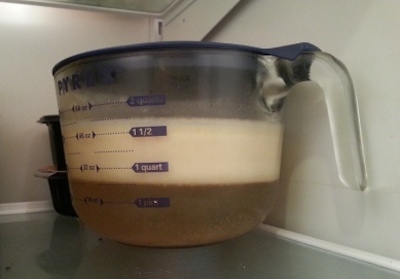
I purchased Cucumber-Melon soap fragrance from Hobby Lobby with a 40% off coupon. Cost me less than $3. Other than that and lye, I made due with tools and supplies on hand.
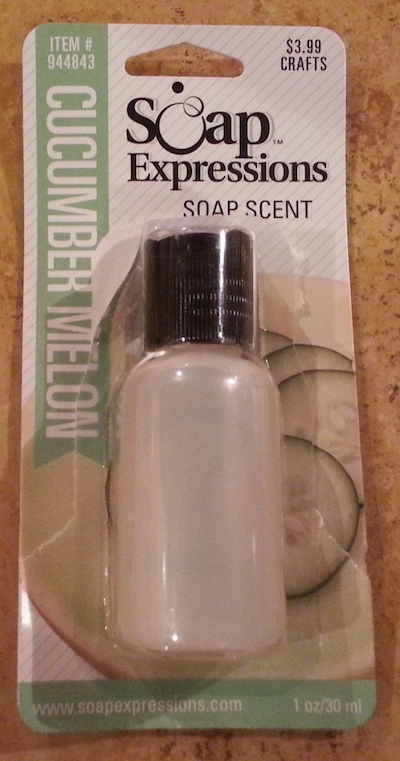
Soap making uses lye. I found mine at the neighborhood hardware store with the drain openers. Don't believe the "100% lye" claim on the front of the bottle, read the ingredients to verify there are no other ingredients in the bottle.
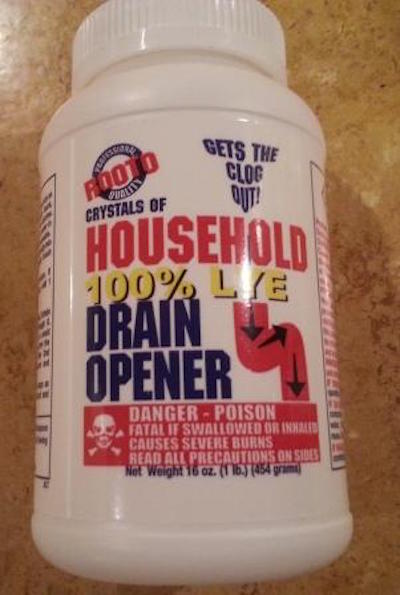
My mold was a Pringles can. I filled it with water to find how many ounces it held and then using an online soap-lye calculator (www.soapcalc.net), I determined a "recipe" for my soap. My mold held 32 ounces so I was sure to make a recipe that yielded slightly less.
I entered everything on page one of the calculator then clicked on "View or Print" to see the recipe. The calculator told me exactly how much of each ingredient I would need for quality soap. I found that I could use just bacon grease (shown on the calculator as "Lard, Pig Tallow") but the resulting Soap Bar Quality didn't fall into recommended ranges. Yes, it will make soap, but seriously, a "1" for cleansing and bubbles? Why bother? (see photo, bottom left corner)
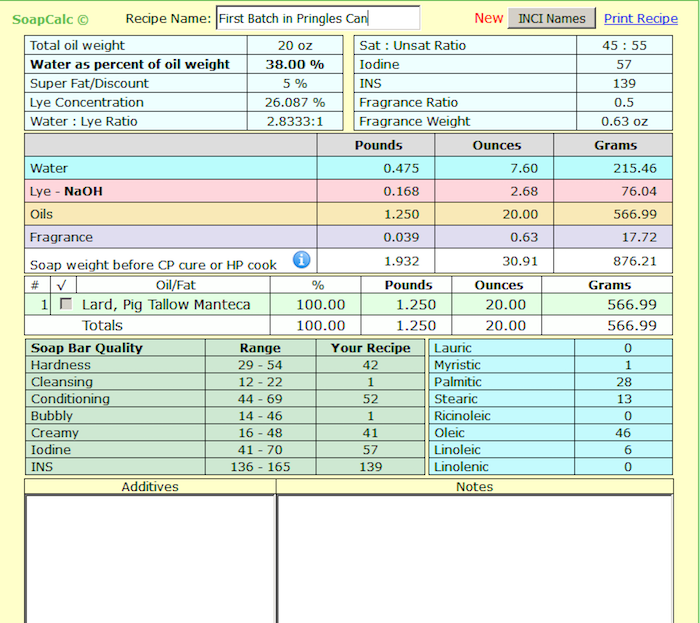
Therefore, I kept tweaking the recipe until I came up with an acceptable soap quality using the oils that I had on-hand. My soap uses 50% bacon grease, 25% coconut oil and 25% olive oil. The calculator converted it to ounces and grams. The recipe also called for .63 oz of fragrance. Everything is within recommended ranges. As you can see below, the total ounces in the recipe is 31.08 - it should fit in the Pringles can.
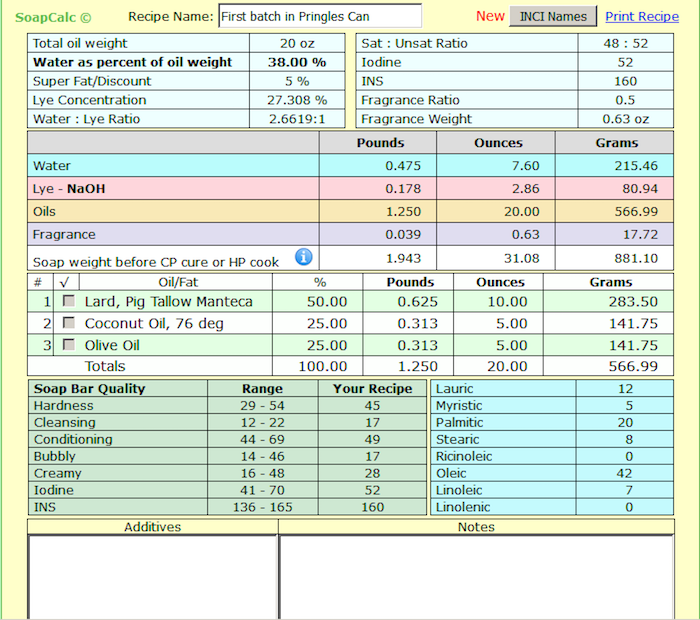
Personal protection equipment is a biggie. Lye is a poison that will burn skin, eyes and lungs. Excellent ventilation is a must. I chose to work on my stovetop with the exhaust fan on high and set up a small fan in a nearby window. I also had goggles, gloves, a dust mask, a new roll of towel paper - easier to wipe-up oils with - and, a big jug of vinegar to counter the lye - just in case I had a splash.
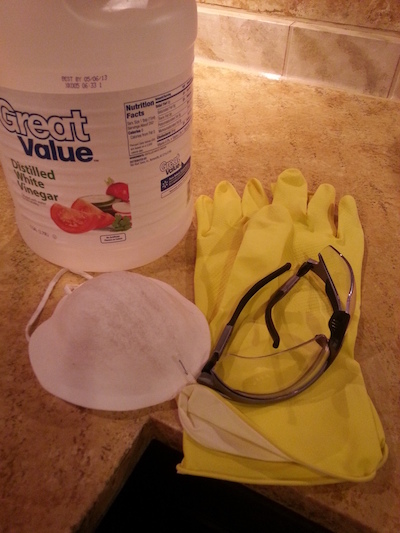
Equipped with plastic tools, PPE, recipe, 100% lye, bacon grease, oils, fragrance and food coloring I was ready to make soap!
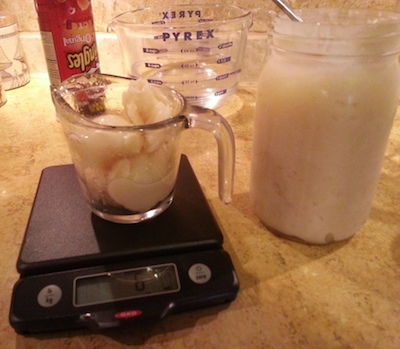
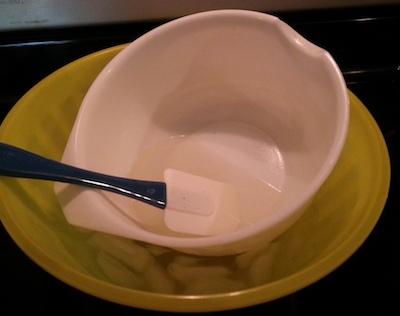
I watched several YouTube videos to learn how to clean bacon grease and make the soap. There were no surprises. Everything was just as I saw it on the videos. Thanks to the videos, I found it quick, easy, safe and unintimidating.
Here's the result. Videos warned against using food coloring in making soap. Here I mixed yellow and blue thinking my cucumber melon soap would be varying shades of green. Instead, it's purple. Oh well. At least it smells lovely and the size fits perfectly in my hand.
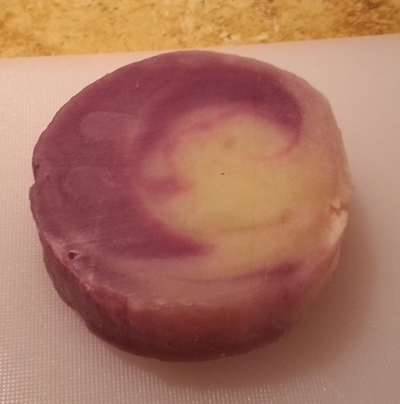
Now, I can't wait to shower using my first batch of bacon grease soap!
TooshieGalore
www.alpharubicon.com
All materials at this site not otherwise credited are Copyright © 1996 - 2016 Trip Williams. All rights reserved. May be reproduced for personal use only. Use of any material contained herein is subject to stated terms or written permission.